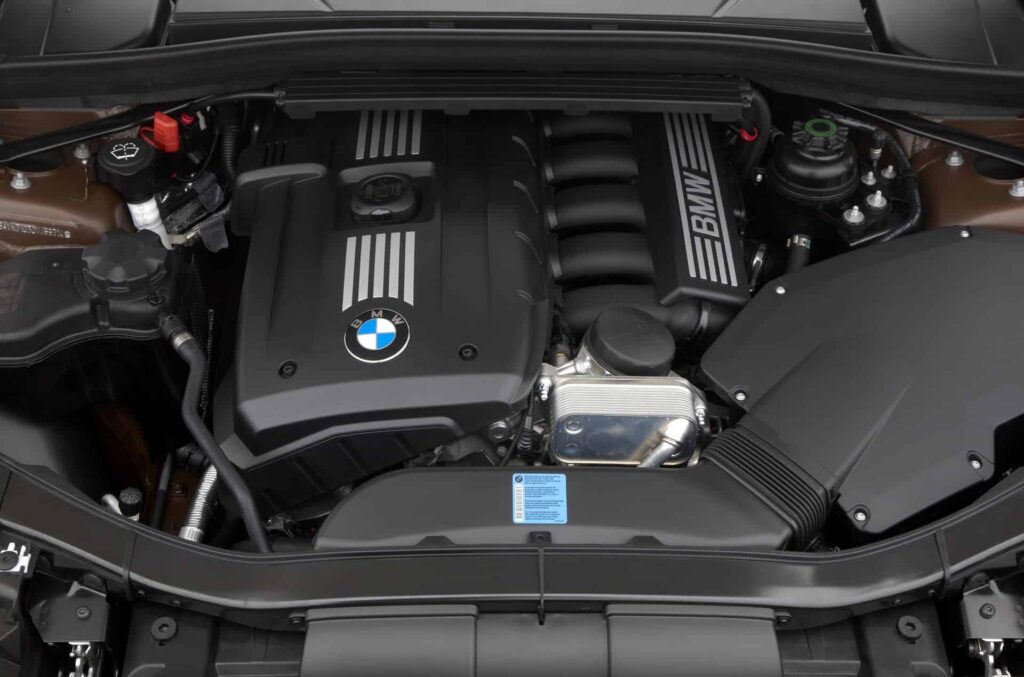When BMW introduced the N52 engine in 2004, it had big shoes to fill. Its predecessor, the M54, had set a high standard for reliability, smoothness, and a satisfying driving experience. The N52, however, didn’t just meet expectations—it arguably exceeded them, becoming one of BMW’s most reliable and versatile engines.
The N52 powered a wide range of BMW models, from the compact E90/E92/E93 3 Series to the versatile E70 X5 SAV, and was available in two main configurations: a 2.5L (N52B25) and a 3.0L (N52B30). Although it was never particularly powerful by today’s standards—its highest output reached 268 hp in the 3.0L version—it became beloved for other reasons.
The engine embodied BMW’s engineering prowess with technologies like Valvetronic (variable valve lift), an electric water pump, and a lightweight magnesium-aluminum engine block. These innovations not only enhanced efficiency but also brought a lighter, more responsive feel to the cars it powered.
Reliability
The N52 has become known as one of BMW’s most reliable engines. Many owners have reported clocking well over 200,000 miles with minimal issues, thanks to its durable design. However, like any engine, it has its quirks. Common maintenance items include replacing the valve cover gaskets, oil filter housing gasket, and oil pan gasket. These parts, though known to need replacement over time, are relatively easy and affordable to replace. The engine also features BMW’s electronic throttle control and double VANOS system for variable valve timing.
Critical maintenance items for the N52 include the oil filter housing gasket and the “Mickey Mouse flange”—a coolant flange notorious for leaking after years of use. These issues can lead to oil and coolant leaks that, if not addressed, can damage the serpentine belt and cause more serious problems. However, with proactive care, the N52 can provide a remarkably dependable experience.
For many enthusiasts, this engine’s reliability makes it one of the brand’s all-time greats, almost deserving of a Toyota badge for its resilience.
Recalls
In addition to its reputation for reliability, the BMW N52 engine has seen a couple of recalls over the years, primarily addressing issues that could impact safety and engine performance.
- 2017 Recall: In 2017, BMW recalled 740,000 six-cylinder models, including those with the N52 engine, due to reports of the crankcase ventilation valve heater short-circuiting. This issue had the potential to cause fires, leading BMW to take precautionary measures to protect vehicle owners.
- 2023 Recall: In 2023, BMW issued another recall affecting 155,627 vehicles equipped with N52 engines, targeting the VANOS system. The recall addressed a problem where the bolts securing the VANOS (variable valve timing) mechanism could loosen or break over time. This issue could lead to performance problems and, in some cases, engine failure if left unaddressed.
Efficiency
BMW engineered the N52 with efficiency in mind. Its Valvetronic system optimizes fuel consumption, and the electric water pump improves cooling efficiency. The N52’s lightweight construction, achieved with a magnesium-aluminum engine block, made it one of the lightest inline-six engines available at the time. Paired with a variable output oil pump, these features made the N52 surprisingly fuel-efficient for an engine of its size and class. On the highway, it was common to see fuel economy in the high 20s mpg range—an impressive feat for a naturally aspirated six-cylinder.
But what truly sets the N52 apart is its feel. Few engines can match its silky-smooth power delivery. The engine’s linear throttle response and rev-happy nature make it a joy to drive. In models like the 325i or the sporty 128i Coupe, the N52 produces a mechanical, metallic sound that feels distinctly BMW.
Even if it’s underpowered by today’s standards, the engine’s engaging feel, smooth power delivery, and impressive revving ability keep it relevant.
Tuning Potential: Modest Gains
While the N52 might not be as tuning-friendly as BMW’s turbocharged engines, it still offers enthusiasts room to play. For those looking to extract more performance, there are a few popular upgrades:
- Intake and Exhaust Modifications: Upgrading to a three-stage DISA intake manifold and adding performance headers can enhance the engine’s airflow and produce modest power gains.
- Software Tuning: ECU remapping is another option, especially when combined with hardware upgrades, that can bring out a bit more performance.
- Supercharging: For those looking for serious power, a supercharger kit can unlock the N52’s potential, but this requires considerable investment and expertise.
BMW enthusiasts often favor these modifications for the improved throttle response, sound, and incremental performance they offer. However, the N52’s naturally aspirated setup does limit tuning potential compared to BMW’s newer turbocharged engines.
A BMW Classic: The N52 in Retrospect
The N52’s longevity, reliability, and characteristic BMW feel make it a hidden gem in the BMW lineup. Though it may not power BMW’s most high-profile models, its smoothness, efficiency, and driver engagement have left a lasting impression. For those who have experienced it, the N52 remains a true BMW engine—silky smooth, robust, and built with a thoughtful balance of innovation and heritage.
Whether in a 3 Series, 5 Series, X1, or Z4, the N52 proves that an engine doesn’t have to be outrageously powerful or turbocharged to be great. It simply needs to be well-engineered and enjoyable to drive. We still remember the days of driving the E89 Z4 sDrive30i, with the top down and the beautiful sound of that naturally aspirated engine filling the air.


